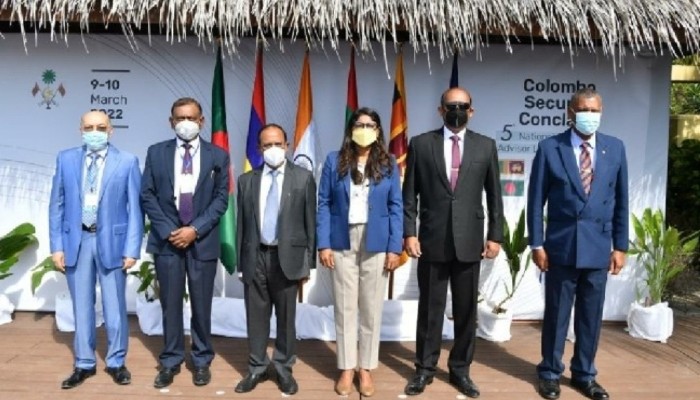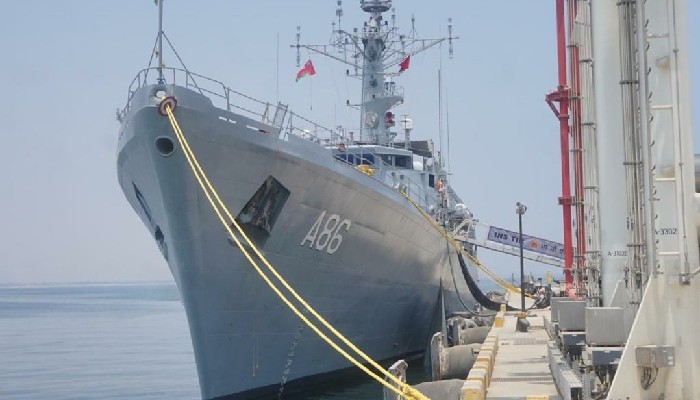India is consistently pushing regional connectivity for better trade
With an aim to push two-way trade with Bangladesh, India has offered Dhaka the use of an inland waterways system up to Varanasi.
This was hinted by Indian High Commissioner in Bangladesh, Vikram K Doraiswami in a recent interview with Bangladesh daily Prothom Alo.
He emphasized that sub-regional connectivity is a good thing for everybody, a game changer.
“We are consistently interested in connectivity for better two-way trade with Bangladesh and for connectivity through Bangladesh,” said Doraiswami.
Mentioning that sub-regional connectivity is a good thing for everybody and that everybody will benefit from it he explained that just as people here correctly understand that India does want access to its northeast through Bangladesh, Bangladesh wants access into India, to Nepal, to Bhutan and now towards Myanmar also.
Recalling that the Prime Minister has specifically said this, the Indian High Commissioner said, “Just as we need you, you need us, so it makes sense to us to work together.”
“When it comes to roads, we already have a reciprocal agreement with Nepal. Our trucks can ply on Nepalese roads, Nepalese trucks can also come to Kolkata or wherever they need to go,” he stated.
“Bhutan has a non-reciprocal agreement with us where Bhutanese trucks can ply on Indian roads, including up to the Bangladesh border, but Indian trucks can't go into Bhutanese territory. So that integration is already happening,” Doraiswami informed.
“So it actually makes sense for all four of us to integrate together. And this can progress towards Myanmar and Thailand also. There is no such initiative where only one side benefits. Everybody benefits,” he said, adding that Bangladesh can do it in a manner in which your interests are preserved, and our interests are also preserved, everybody's interests are preserved.
Turning to the other ways of connectivity, the Indian High Commissioner said, there are railways.
“People in Bangladesh are not aware but since 1976 we have an arrangement for the use of Indian railway wagons to carry Bangladesh goods to Nepal and vice versa. It's been a slow process because it's only the last decade that Bangladesh has focused strongly on building the railway,” he reckoned.
“But more railway connectivity will be the game changer for Bangladesh, just as much as it is for the entire region. Railway is faster, environmentally friendly, carries much more goods and eventually can help seriously connect,” Doraiswami said.
“Similarly, airports. We can start looking at sub-regional connectivity for freight. And even inland waterways. We have even offered the use of our inland waterway system up to Varanasi so you can actually shop goods from Varanasi to Nepal, using the India-Nepal water connectivity,” he maintained.
“And looking at Bangladesh’s extensive riverine network, we could also ship goods to Tripura further afield from there,” the Indian envoy to Bangladesh added.
“So long term, we have to re-imagine connectivity as a benefit for everybody. It’s not a one-way benefit. But it is a fact, and I have been trying to convey this to people, there is this impression that somehow India has got connectivity across Bangladesh and Bangladesh hasn’t. Actually it’s the other way around,” he said.
According to Doraiswami, since the agreement on the Chattogram and Mongla port was signed, and the SOPs were signed that in 2019, there has been only one trial shipment of containers and the total number of containers has been exactly four, not 400.
“So your government and your establishment had taken all the blame for giving it, but nothing has actually happened! So there is really no reason for people to get upset,” he said.
“In fact, it would be much more useful if we could get this going, because there is money to be made from the transport. It will cost and we are happy to pay the cost,” the Indian High Commissioner said.
 Contact Us
Contact Us  Subscribe Us
Subscribe Us









 Contact Us
Contact Us
 Subscribe
Subscribe
 News Letter
News Letter

